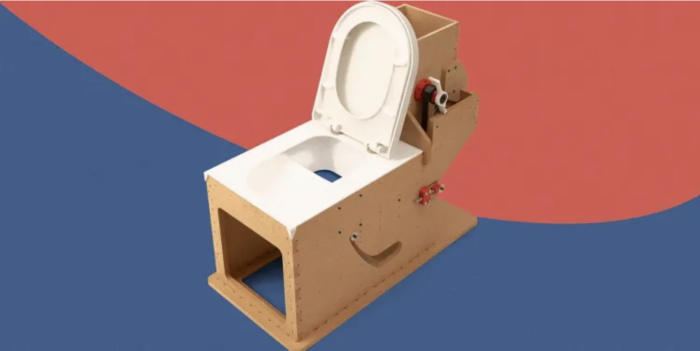During an internship with Loowatt, a sanitation company working towards providing waterless toilets for Madagascans, Brunel University Product Design Engineering graduate Archie Read drafted up a brief for a waterless toilet for rural Sub-Saharan African communities.
Read, who also spent an extended period living in Madagascar, was inspired to create the Sandi toilet after seeing the extremely poor sanitation conditions in rural areas. The design requirements for rural areas differ from those for urban areas because rural areas often don’t have access to running water or electricity.
When Read was drafting his waterless toilet brief, he outlined specific criteria that the design would have to meet, including meeting the service level of ‘safely managed’ according to the Sustainable Development Goals ladder for sanitation services, having the capacity to deal with the excreta from a household of seven adults for two days, offer adaptable storage and disposal, and cost no more than $72 per unit.
With those criteria in mind, Read developed a concept for the Sandi waterless toilet that uses sand to ‘flush’ the contents of the toilet with a conveyor belt. For Read, the flushing element of the toilet was key to the design to make the toilet-going experience more dignified and comfortable for the user. The resulting toilet is designed with four components – seat/lid, body, flushing mechanism and storage – and separates liquid waste and solid waste from one another.
The final flushing mechanism chosen by Read in his prototype was ‘sand flushing’, which employed a conveyor belt system that feeds solid waste from the bowl covered in sand into a storage space below the toilet, where it can be used as fertiliser thereafter. The sand element of the process ensures that faeces does not stick to the belt.
After expansive research and testing, Read created a prototype that was used for testing and evaluation with different types of sands and faeces. The tests were all successful, with the sand and belt safely removing any excretions without leaving behind mess. However, there were issues with the hatch door not opening completely and the current cost of production sits higher than Read would like.
Hopefully, with further testing and validation, Read can turn his design into a fully realised and more affordable alternative to unsafe sanitary conditions.The full project brief of the Sandi toilet can be found on Read’s Behance page here: https://www.behance.net/gallery/147117657/Sandi-Sustainable-Toilet.
Read more:
Tackling sanitation taboos with panache.
Night Loo offers refugee women a safer toilet option.
Can design solve for a pandemic?
Credits: Archie Read







